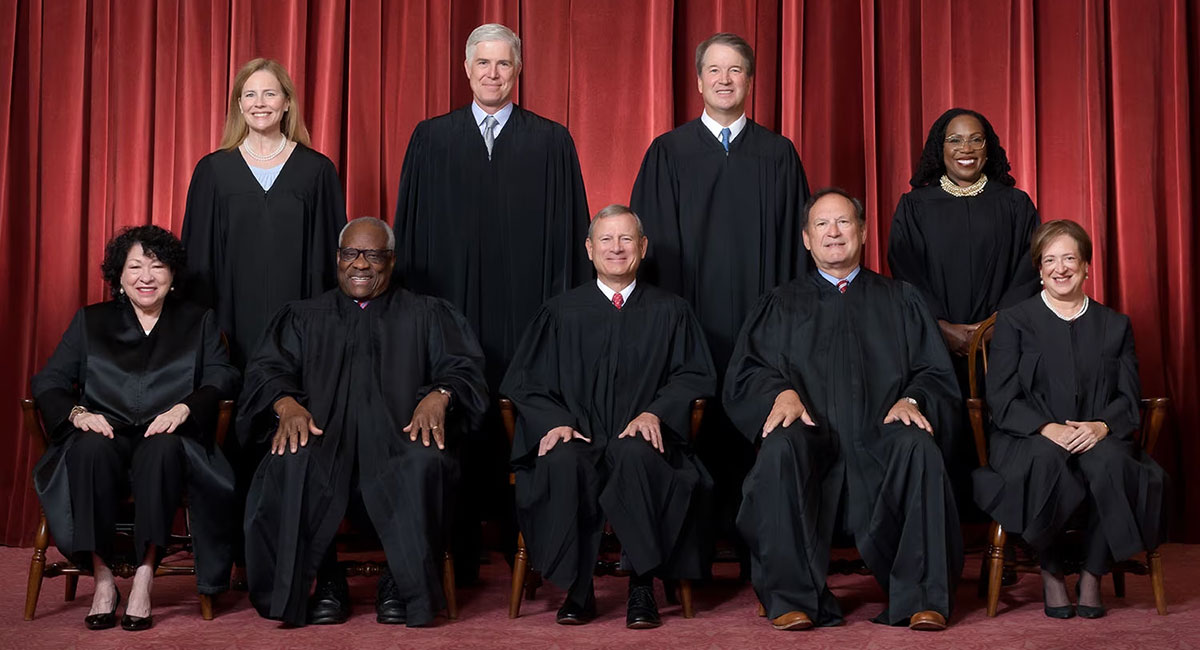How did we ever get into this mess of where six people, coming sometimes down to one, can run an entire country of some 330 million people? There’s something wrong with this picture—except it can’t be corrected. It’s been so since John Marshall’s tenure as Chief Justice of the United States. There’s a reason Marshall’s huge statue and quotations grace the basement floor of the Supreme Court building in Washington, D. C. He gave the Supreme Court its unchallengeable superiority in legally running the country.
British Prime Minister Benjamin Disraeli said near the end of the 19th Century that the U. S. Constitution was “the most remarkable political document ever struck by the hand of man.” Yes, “political,” but not legal document. I say this because I believe the U. S. Constitution is seriously flawed in one major regard: the selection, limitations, and control of Supreme Court justices. We let them run unhindered legal matters in the entire country. But there is no workable option.
The nine U. S. Supreme Court justices are appointed by the President, with the advice and consent of the U. S. Senate. Their appointments are for a lifetime. Worse, these appointments are always political. Democratic presidents appoint, always, center-left justices, and Republican presidents appoint, always, center-right justices. Some Republican presidents’ appointments have moved left or toward the center once on the court: Earl Warren, David Souter, Harry Blackmun, Sandra Day O’ Connor, Anthony Kennedy.
Presently, the U. S. Supreme Court is comprised of three liberals and six conservatives, though Chief Justice John Roberts is becoming increasingly a swing vote. This is to say that six justices can legally run and control legal aspects of the entire country—six! That is by any measure an imperial court—fine if it suits one’s politics.
Constitutional scholar Jeffrey Toobin has observed: “When it comes to the core of the Court’s work, determining the contemporary meaning of the Constitution, it is ideology, not craft or skill, that controls the outcome of cases. . . When it comes to the incendiary political issues that end up in the Supreme Court, what matters is not the quality of the arguments but the identity of the justices.” What separates justices “is judicial philosophy—ideology—and that means everything on the Supreme Court.” Six people!
Similarly, Richard A. Posner, the great conservative judge and law professor, has written: “It is rarely possible to say with a straight face of a Supreme Court decision that it was decided correctly or incorrectly.” Constitutional cases, he adds, “can be decided only on a basis of political judgment, and a political judgment cannot be called right or wrong by reference to legal norms.” Not all Supreme Court cases, though, are political.
A second major flaw with the U. S. Constitution is that the Supreme Court—the third branch of government in addition to the Executive and Legislative branches—is not governed by checks and balances. It gets away scot-free. Presidents, on the other hand, have to be elected and re-elected, and their actions can be overridden by Congress. Congress, too, has to be elected and re-elected, and their passed bills can be vetoed by the President. No such governance controls the Supreme Court.
This extraordinary singular, unchecked power of the Supreme Court began in 1803 with Marbury v. Madison, where for the first time, the Supreme Court ruled an act of Congress unconstitutional. They’ve been running the show and the country ever since.
The only way this power play can be stopped is through a constitutional amendment. That is nearly impossible now owing to the mammoth hurdles imposed by Article V.
The late Robert Bork argued that Congress should be allowed to veto an act of the Supreme Court and that if that were a failure, it would at least be a failure of democracy. With today’s Congress, that is a frightening thought.
Some Democrats now are arguing that the present Supreme Court should add four new members, appointed by President Biden and confirmed by the U. S. Senate, giving Democrats a 7 to 6 majority. That would be a bad idea for two reasons: One, when Republicans again control the presidency and senate, they could add two additional seats to the Court, giving them the majority of 8 to 7—ad infinitum. Two, this adding of numbers, based on justices’ politics, would make the Supreme Court a mere political expansion of the Legislative second branch of government. The third branch, the Supreme Court, would disappear, being only an extension of Congress.
When I was chief of staff for Chief Justice Warren Burger, he often said the Constitution was “not perfect.” He was right. The Supreme Court is not perfect, but there is no workable way to fix it.








